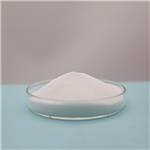- Hydroxypropyl acrylate
-

- $100.00 / 50kg
-
2025-04-16
- CAS:25584-83-2
- Min. Order: 1kg
- Purity: 99%
- Supply Ability: 5000Ton
- Hydroxypropyl acrylate
-

- $0.00 / 1KG
-
2025-04-15
- CAS:25584-83-2
- Min. Order: 1KG
- Purity: 99%
- Supply Ability: 500000kg
|
| | Hydroxypropyl acrylate Basic information |
| Product Name: | Hydroxypropyl acrylate | | Synonyms: | 1,2(or3)-propanediol,1-acrylate;2-Propenoic acid, monoester with 1,2-propanediol;2-Propenoicacid,monoesterwith1,2-propanediol;acrylic acid, monoester with propane-1,2-diol;HYDROXYPROPYL ACRYLATE, 95%, MIXTURE OF ISOMERS;2-HYDROXYPROYL ACRYLATE;Acrylicacidhydroxypropylester(mixtureof2-hydroxy-n-propyland2-hydroxy-1-methylethylacrylate)(stabilizedwithme;HYDROXYPROPYLACRYLATE(ALLISOMERS) | | CAS: | 25584-83-2 | | MF: | C6H10O3 | | MW: | 130.14 | | EINECS: | 247-118-0 | | Product Categories: | AcrylateCarbonyl Compounds;Acrylic Monomers;C6 to C7;Esters;Monomers | | Mol File: | 25584-83-2.mol |  |
| | Hydroxypropyl acrylate Chemical Properties |
| Melting point | -92°C | | Boiling point | 77 °C5 mm Hg(lit.) | | density | 1.044 g/mL at 25 °C(lit.) | | vapor density | 4.5 (vs air) | | vapor pressure | 1Pa at 20℃ | | refractive index | n20/D 1.445(lit.) | | Fp | 193 °F | | form | clear liquid | | color | Colorless to Almost colorless | | Water Solubility | The water solubility of hydroxypropyl acrylate is estimated to be 307g/L(25°C) | | InChIKey | QZPSOSOOLFHYRR-UHFFFAOYSA-N | | LogP | 0.2 at 25℃ | | CAS DataBase Reference | 25584-83-2(CAS DataBase Reference) | | NIST Chemistry Reference | 2-Hydroxypropyl acrylate(25584-83-2) | | EPA Substance Registry System | Hydroxypropyl acrylate (25584-83-2) |
| | Hydroxypropyl acrylate Usage And Synthesis |
| Chemical Properties | Hydroxypropyl acrylate is a clear, colourless liquid, miscible with water and soluble in most organic solvents. It is a versatile difunctional acrylate monomer with a characteristic high reactivity. Hydroxypropyl acrylate is mainly used either as a co-monomer in the manufacture of polymers or as a chemical reactant in the manufacture of chemical intermediates. In the manufacture of polymers, hydroxypropyl acrylate can be co-polymerized with acrylic acid, acrylates, methacrylates, vinyl acetate, vinyl chloride, vinylidene chloride, styrene, butadiene, and the like. Co-reactants with hydroxypropyl acrylate include aromatic and aliphatic isocyanates, anhydrides, and epoxides. The polymers and chemical intermediates made with hydroxypropyl acrylate find applications in automotive top coatings, architectural coatings, photocure resins, and adhesives. | | Uses | Hydroxypropyl acrylate is an acrylic monomer for use in UV inks, lacquers, adhesives, etc. [2-Hydroxy-1-propylacrylate (67%)+1-hydroxy-2-propylacrylate(33%). | | Uses | Hydroxypropyl acrylates may be used for the synthesis of a number of acrylates. The presence of both vinyl and hydroxyl allows copolymerization of the acrylate with vinyl monomers as well as with di- or polyisocyanates, anhydrides, or epoxides. | | General Description | A clear colorless liquid. Toxic by inhalation and skin absorption. Corrosive to tissue. Flash point 136°F. May polymerize exothermically if heated or contaminated. If the polymerization takes place inside a container, the container may rupture violently. Vapors heavier than air. Used to make plastics. | | Air & Water Reactions | Flammable. Less dense than water and slightly soluble in water. | | Reactivity Profile | Hydroxypropyl acrylate polymerizes readily in the presence of heat and light generating much heat; reacts with strong oxidants. REF [Handling Chemicals Safely, 1980. p. 235]. | | Health Hazard | Inhalation irritates nose and throat and causes coughing; lung injury may occur. Ingestion causes irritation and burning of mouth and stomach. Vapor irritates eyes. Contact with liquid causes severe burns of eyes and burns of skin. | | Fire Hazard | Non-combustible, substance itself does not burn but may decompose upon heating to produce corrosive and/or toxic fumes. Some are oxidizers and may ignite combustibles (wood, paper, oil, clothing, etc.). Contact with metals may evolve flammable hydrogen gas. Containers may explode when heated. | | Flammability and Explosibility | Non flammable | | Potential Exposure | Hydroxypropyl acrylate is a chemical monomer, manufactured and processed within closed systems. The primary routes of potential exposure to hydroxypropyl acrylate are skin contact and vapor inhalation. The lower vapor pressure (0.038 hPa at 25oC) helps reduce potential vapor inhalation exposure. In an industrial setting, ingestion is not an anticipated route of exposure. The primary use of hydroxypropyl acrylate in the production of polymeric coatings (used predominantly in the automotive industry) results in virtually no unreacted monomer in the finished coatings. The potential exposure to aerosols of hydroxypropyl acrylate is, therefore, highly unlikely. | | Carcinogenicity | No carcinogenicity studies were identified for hydroxypropyl acrylate. As reviewed for Repeated Dose toxicity, no evidence of carcinogenicity was observed for the closely related, hydroxyethyl acrylate, following 18 months of inhalation exposure (Kociba et al., 1979; Rampy et al., 1978). | | Solubility in water | The hydrolysis rate of hydroxypropyl acrylate, as with other acrylates, is pH dependent with little hydrolysis at acid and neutral pH and rapid hydrolysis in alkaline conditions. The hydrolysis halflives determined at pH 3, 7, and 11 were > 490 days, >230 days, and 0.056 days, respectively (Gonsior et al., 1997). | | Toxics Screening Level | The Initial Threshold Screening Level (ITSL) for hydroxypropyl acrylate is 28 μg/m3, with 8-hr averaging time. |
| | Hydroxypropyl acrylate Preparation Products And Raw materials |
|